#reed richards wallpapers
Text
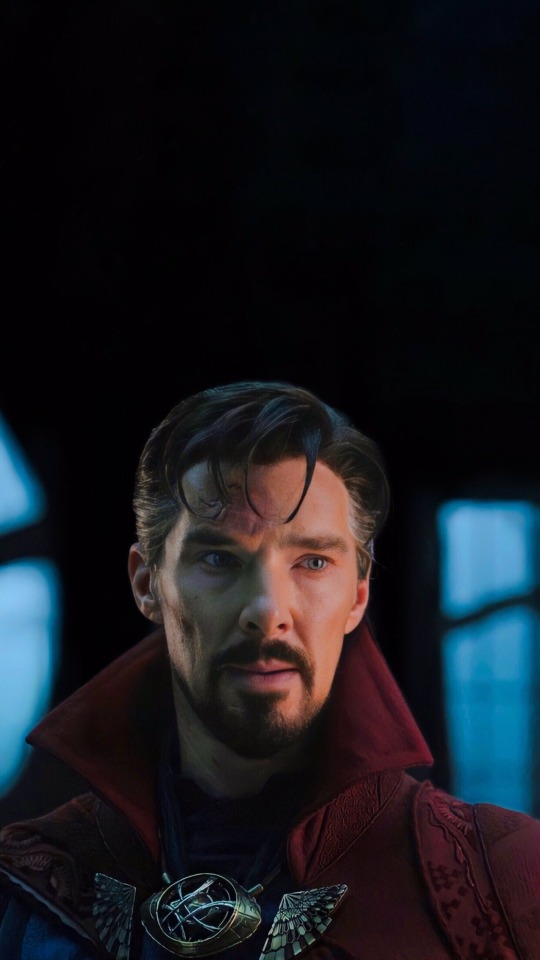
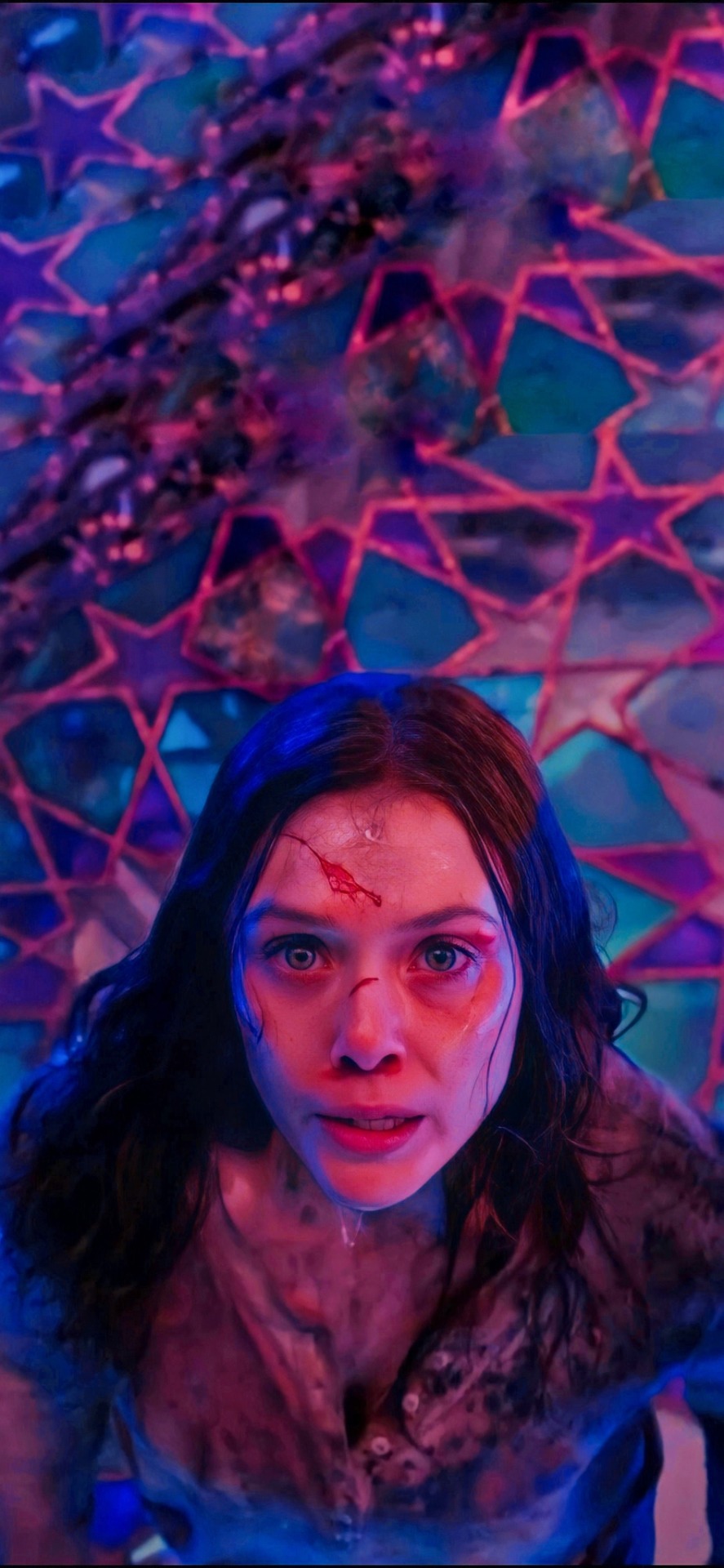
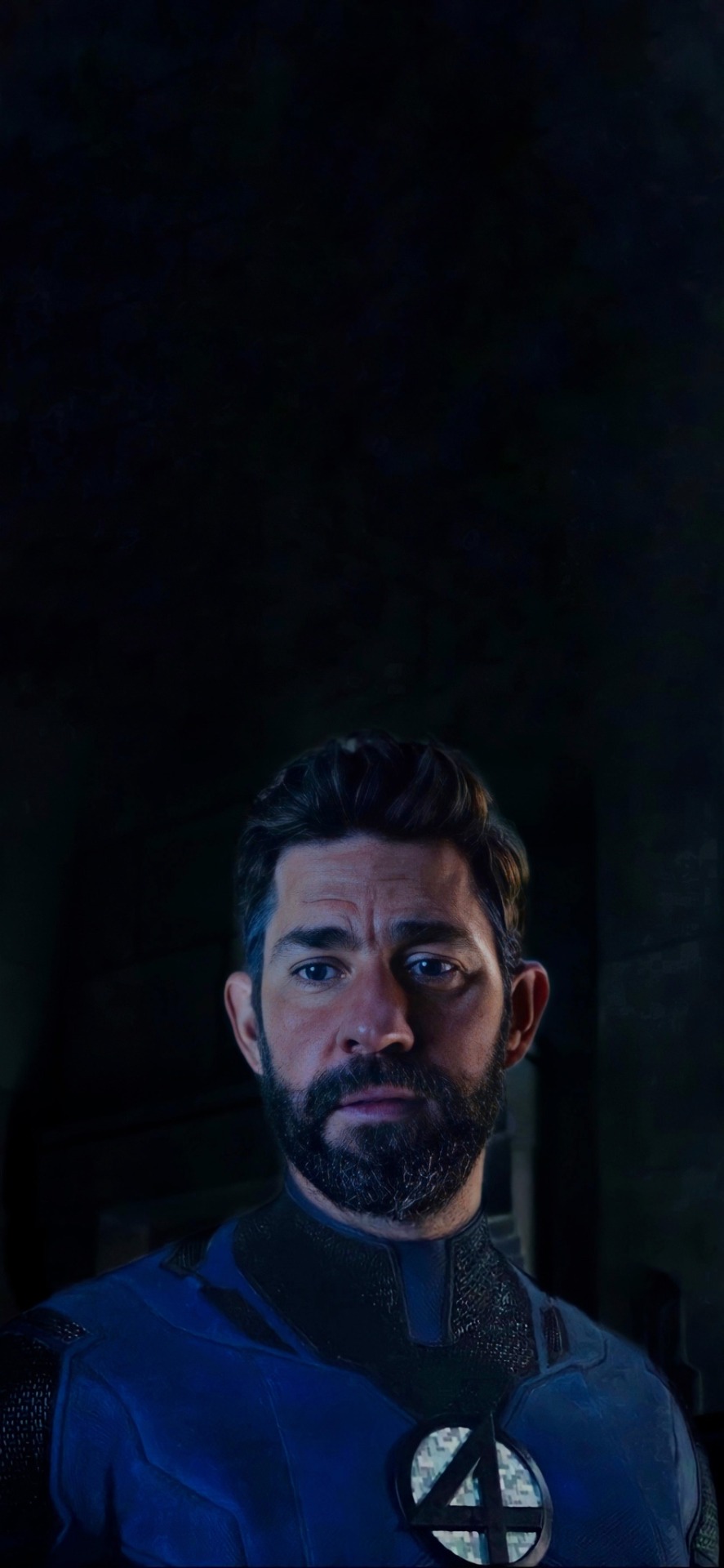
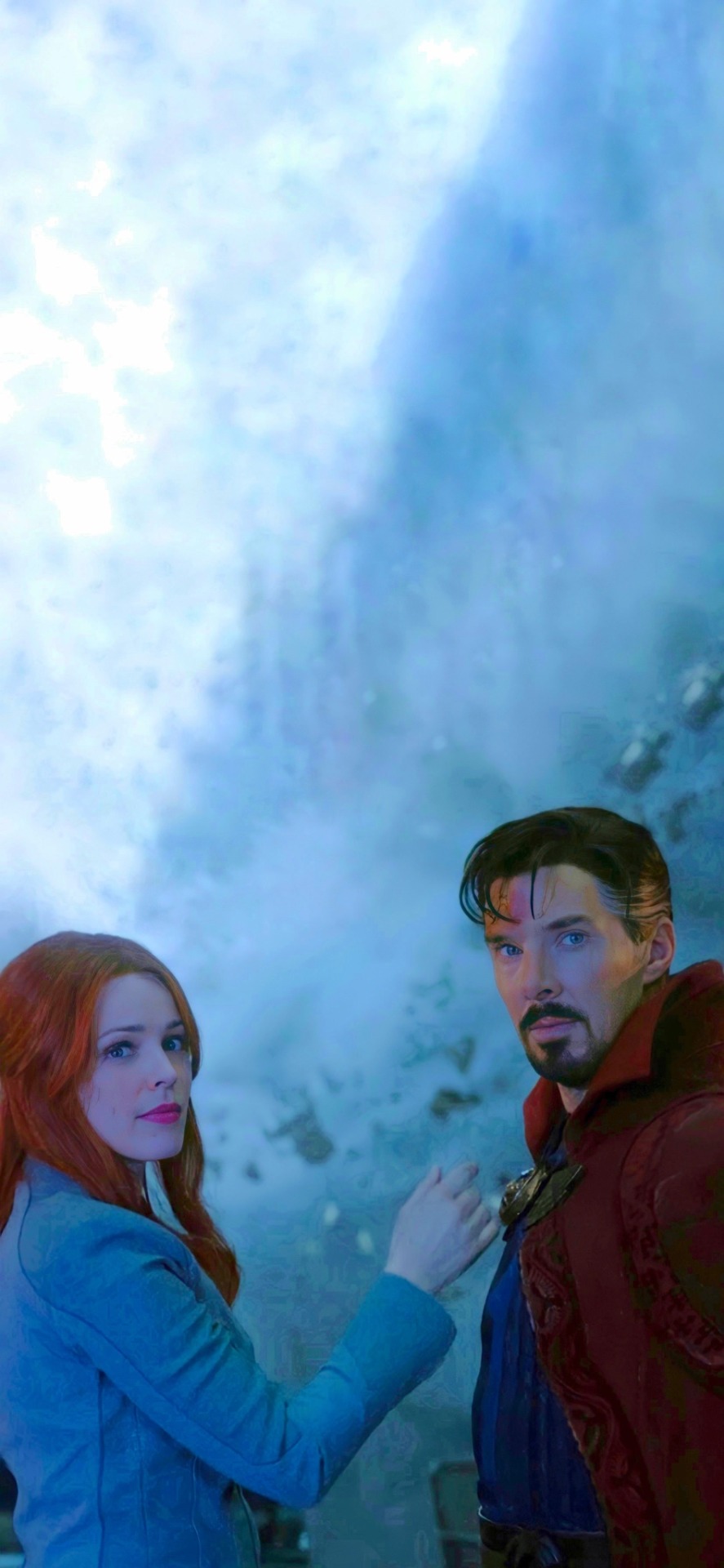






Doctor Strange in the Multiverse of Madness wallpapers.
#doctor strange in the multiverse of madness#doctor strange in the multiverse of madness wallpapers#doctor strange#doctor strange wallpapers#doctor strange lockscreens#benedict cumberbatch#benedict cumberbatch wallpapers#wanda maximoff lockscreens#wanda maximoff#scarlet witch wallpapers#scarlet witch#Wanda maximoff wallpapers#reed richards#mr fantastic#reed richards wallpapers#mr fantastic wallpapers#america chavez#marvel#marvel lockscreens#marvel wallpapers#wallpaper#America Chavez wallpapers#marveledit#elizabeth olsen#elizabeth olsen lockscreens#elizabeth olsen wallpaper#i love you in every universe#the illuminati#john krasinski#fantastic four
400 notes
·
View notes
Photo

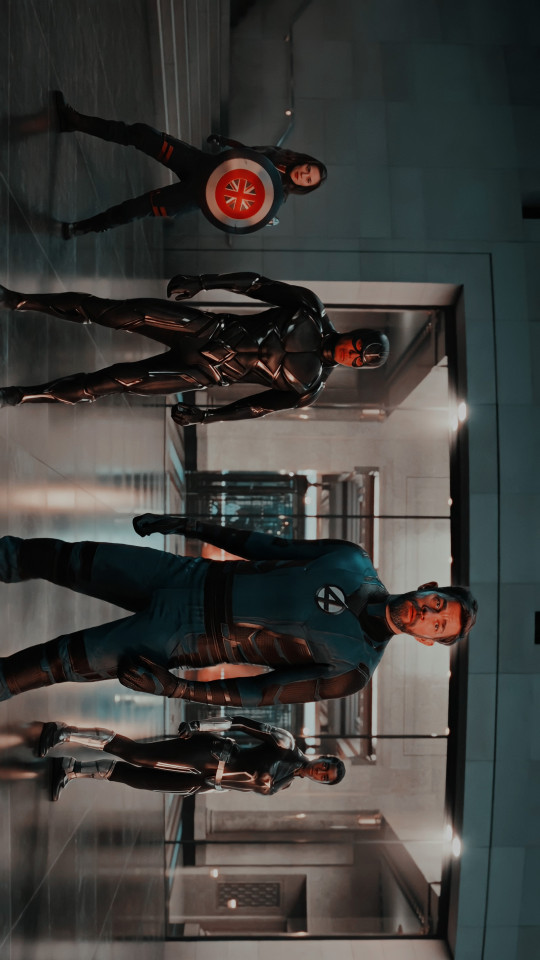



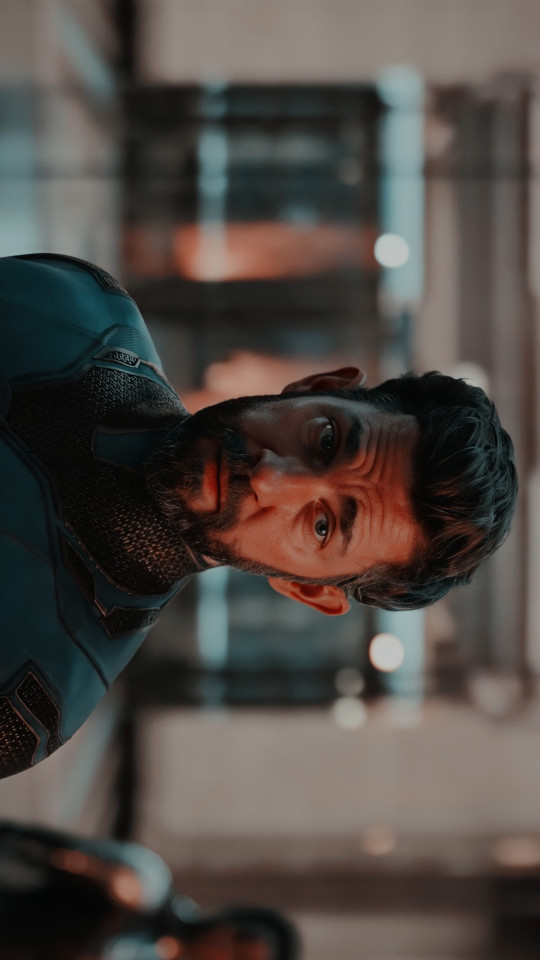

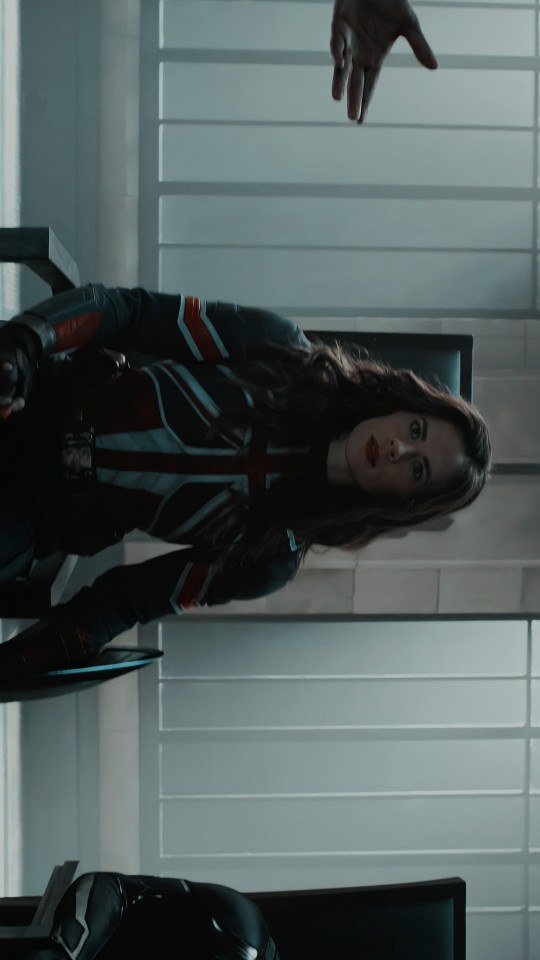

𝐥𝐨𝐜𝐤𝐬𝐜𝐫𝐞𝐞𝐧𝐬
𝐝𝐨𝐜𝐭𝐨𝐫 𝐬𝐭𝐫𝐚𝐧𝐠𝐞 𝐢𝐧 𝐭𝐡𝐞 𝐦𝐮𝐥𝐭𝐢𝐯𝐞𝐫𝐬𝐞 𝐨𝐟 𝐦𝐚𝐝𝐧𝐞𝐬𝐬
#doctor strange in the multiverse of madness#multiverse of madness#marvel#marvel lockscreen#marvel wallpaper#marvel aesthetic#peggy carter#captain carter#hayley atwell#scarlet witch#wanda maximoff#elizabeth olsen#fantastic four#fantastic four lockscreen#fantastic four wallpaper#fantastic four aesthetic#reed richards#reed richards lockscreen#reed richards aesthetic#america chavez#xochitl gomez#The Avengers#avengers#avengers lockscreen#avengers wallpaper#avengers aesthetic
129 notes
·
View notes
Text
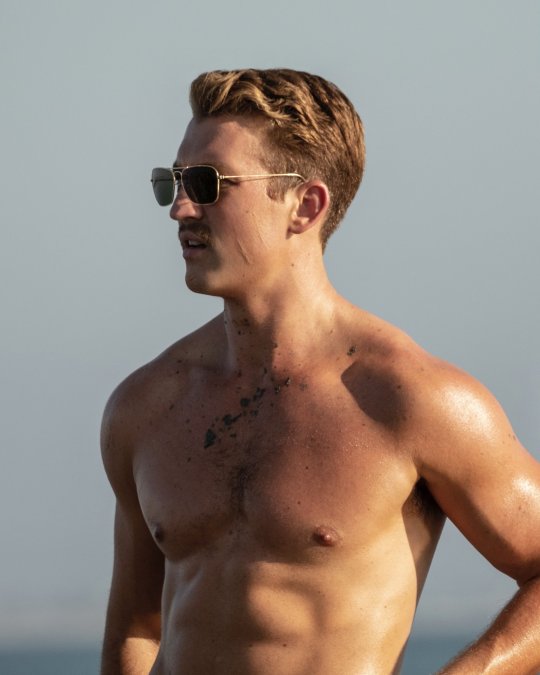

Miles teller
#miles teller#fantastic four#reed richards#marvel#disney plus#pretty boy#men muscle#wallpaper#aesthetic wallpaper#icons#lockscreen#taylor swift
10 notes
·
View notes
Text
13 Most Beautiful: Songs for Andy Warhol's Screen Tests - Dean and Britta 2010
One of my close friends and bandmates lent me her cd of this album (yes we swap cd, we are music nerds) and I was immediately entranced by it. It has the feel of the Velvet Underground in a way that seems to be equal parts homage and worship without being a direct carbon copy, in some parts sounding very 90s in a way I can;t quite put my finger on - it definitely does not sound like 2010 I'll tell you that.
Andy Warhol's Screen Tests were another one of his wacky little film ideas, which boiled down to 'put person in front of camera, push record on camera'. Pretty much everyone in the Factory, and most visitors, everyone from Edie Sedgwick through Mama Cass through Gerard Malanga through Bob Dylan through Salvador Dalí, was... subjected to one of these. All are shot in black and white, and they generally last for three minutes, though are played slowed down.
Dean and Britta were approached to make music accompanying 13 of the screen tests for a movie (which regrettably at time of writing I have not seen, will watch soon and update this when I have) and accompanying soundtrack. Each song is specific to a person, and the second disc (of the cd at least) is seven alternate versions/remixes, which I actually like better in some cases, although I did just read an article (from popmatters) saying that indeed some of the mixes, specifically Sonic Boom's, work better as standalone music that the versions that do go with the movie. They certainly do have a hypnotic quality to them. That there are 13 songs is significant - Warhol had two exhibitions called '13 Most Beautiful Men / Women'.
The songs are -
Silver Factory Theme (Billy Name)
I'll Keep It With Mine (Nico)
Not A Young Man Anymore (Lou Reed)
I Found It Not So (Mary Woronov)
It Don't Rain In Beverly Hills (Edie Sedgwick)
Incandescent Innocent (Freddy Herko)
International Velvet Redux (Susan Bottomley)
Teenage Lightning and Lonely Highways (Paul America)
Herringbone Tweed (Dennis Hopper)
Richard Rheem Theme (Richard Rheem)
Knives From Bavaria (Jane Holzer)
Eyes In My Smoke (Ingrid Superstar)
Ann Buchanan Theme (Ann Buchanan)
And you will not believe how much googling I just did to figure all that out.
Silver Factory of course refers to the period where the Factory was wallpapered in tinfoil. I'll Keep It With Mine is a non-album Dylan song covered by Nico. Not A Young Man Anymore is a Velvet Underground rare song convered so convincingly by Dean Wareham that I thought for a moment it *was* the VU on the recording - classic mid-sixties garage rock sound giving the indie treatment. It Don't Rain In Beverly Hills / no matter what they say / the pain never washes away is probably the most Edie Sedgwick song out there, beating even Patti Smith's Poppies, which was written for her. Teenage Lightning and Lonely Highways could fit nearly any teen road trip movie, and has definite fictional 1950s vibes, perfectly fitting a guy nicknamed Paul America. Knives From Bavaria is delightfully nonsensical and I have no idea what it has to do with Jane Holzer or her teeth brushing but it's a cool little song anyways.n
This album has a deep sense of sadness to it, despite the generally upbeat vibes. Maybe it's cause we know that so many of the superstars died young, or had a lot of bad stuff happen to them, struggled with addiction, or just that they are a footnote in history. Maybe it's because they stare at you, or avert their eyes, from the depths of time and the screen tests. Because, for a lot of us on here reading this, some of the people who this music was written for died before our parents were born. Some of the songs are genuinely tragic, and like the superstars themselves, the facade of glitter and beauty lies thin over emotion. The Factory and the people in it were some of the defining points of the sixties, and yet listening to this music, watching the screen tests, can at times fell like being let in on a secret about their lives.
I really love this album, and though I don't know it particularly well, it has a profound impact on me and I will be listening to some of the songs on this for a very long time.
#13 most beautiful#dean and britta#andy warhol#screen test#experimental film#nico#lou reed#edie sedgwick#album#velvet underground#music recommendation#cds
13 notes
·
View notes
Text

made a wallpaper/lock screen of Rachael Stott's Reed/Sue art and thought it was a nice edit so I figured I'd post it here! feel free to use!
#❤❤#marvel#reed richards#sue storm#mr fantastic#invisible woman#fantastic four#rachael stott#marvel wallpaper#marvel lockscreens#reedsue
22 notes
·
View notes
Text


↶◦²⁵·³·¹⁸◦↷
ʷᵉˡᶜᵒᵐᵉ ˢʷᵉᵉᵗⁱᵉ
❐ ˚₊﹆⁞ .These two brighten my days
#wallpaper#edit#GOALS#ICONS#RK900#GAVIN REED#DBH GAVIN#DBH NINES#DBH RK900#REED900#DBH#detroit become human#DETROIT#BECOME A HUMAN#Richard#CONRAD#RAT MAN
88 notes
·
View notes
Text





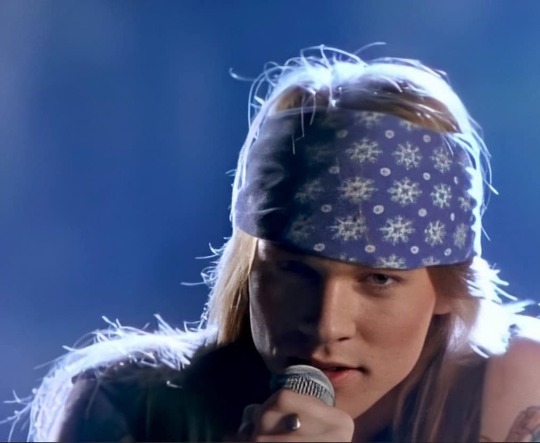


#axl rose#guns n roses#sweet child o' mine#slash hudson#duff mckagan#dizzy reed#richard fortus#wallpaper#lockscreenwallpaper#lockscreens#lockscreen
27 notes
·
View notes
Text
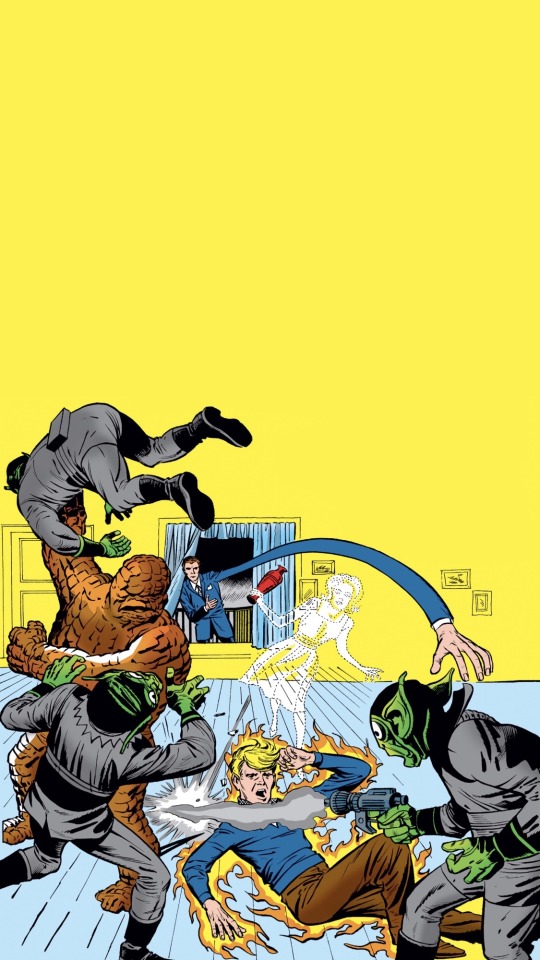
#marvel comics#fantastic four#ben grimm#mister fantastic#invisible woman#human torch#johnny storm#sue storm#reed richards#the thing#skrulls#jack kirby#stan lee#iphone#wallpaper#edit
9 notes
·
View notes
Photo


Mrs & Mr Fantastic by son6 _
214 notes
·
View notes
Photo


Wallpapers from Venom #11
52 notes
·
View notes
Photo

Fantastic Four
High Res
http://www.mediafire.com/view/ha1l63gu62o663r/fanfour2012004_cvr_var.jpg
#fantastic four#comics#marvel#wallpaper#invisible woman#the thing#the human torch#mr. fantastic#Reed Richards#sue storm#Ben Grimm#Johnny Storm#valeria richards#franklin richards
6 notes
·
View notes
Text
Stan Lee's super-hero vision defined the world outside our window

By Ian Dunt
Yesterday, Stan Lee died. He was the creator, in collaboration with others, of countless superheros, including Spider-Man, the Hulk, Daredevil, the Fantastic Four, Black Panther, X-Men, Thor and Iron Man. These characters are now the engine of the global blockbuster movie industry, as well as countless cartoons, childrens toys and, of course, comics. They are part of the wallpaper of our world. Barely a day will go by without you spotting them somewhere, whether it's in a shop window, or the T-shirt of a passerby, or a lunchbox. It is hard to think of a single other figure who contributed so much to the culture we live in today.
There was a dark side to his animated public persona. You could spend an article talking about the failure to properly reward other creators, or the charges to fans for autographs, or the weird and unpleasant recriminations around his household in his later years. Underneath the superhero shine, there was a money machine, working as money machines always do. But today isn't the day for that. Today is the day to recognise his achievements. He wanted to portray the world outside your window. And that world was a vibrant place of multicultural myth-making.
Before Lee, comics had become a fairly stuffy affair. The Golden Age of comics, in the late 30s and early 40s, when characters like Superman, Batman and Wonder Woman were created, was originally imbued with a odd type of transgression. Superman was the product of Jewish immigrants to the US and acted as a deified version of that experience. Batman had a troubling noirish elasticity. Early Wonder Woman comics were obsessed with ideas of loving submission and female superiority.
But in the 1950s, the genre had been targeted by moral puritans. Psychiatrist Fredric Wertham's book 'Seduction of the Innocent' claimed, among other things, that the stories of Batman and Robin were "psychologically homosexual", triggering a moral panic among legislators and parents. The Comics Code Authority was set up, demanding strict moral guidelines in stories. The "sanctity of marriage" had to be emphasised in romance. Figures of authority would be presented in ways which promoted respect. "In every instance good shall triumph over evil," it demanded. It was an artistic death sentence. The readership left in droves as the creativity and daring was regulated out of existence.
But regulations rarely work the way they're intended. They tend to push things in weird directions, as people try to game the system. For many superhero comics, like Batman, the hero was pushed away from street-level crime stories towards grand and colourful sci-fi plots, which ended up linking arms with the psychedelic drug-infused hippie culture of the 60s. This was picked up later by writers like Grant Morrison to make a kind of mind-expanding anarchic infrastructure to the genre.
But Lee's response to this stifling culture was to bring back readers by humanising the super heroes. The universe he created, in an unsurpassed frenzy of creativity in the 60s, was designed to reflect the "world outside your window". Instead of fictional cities like Metropolis, which represented sun-lit progress, and Gotham, which represented gothic noir, stories were set in real locations. The characters were chiseled away at too. The square-jawed moral perfection of characters like Superman were replaced with fundamentally flawed, bickering personalities, whose own weaknesses and failings drove their narrative arcs.
Lee, who was himself the child of immigrants, populated his universe with a colourful collection of characters, from different classes, races and sexes, and with different personalities and body-types. It was a kind of lunatic multiculturalism, a place where diversity was injected into every element of the stories.
The Thing was rough-and-ready, working class and from the Lower East Side. His best friend with the thin, intellectual, distant Reed Richards. Spider-Man was a nerdy orphan living with his aunt and uncle. Scientist Bruce Banner was turned into a Jekyll-and-Hyde green monster which reflected his own internal angst. Tony Stark was a billionaire industrialist, who would later develop a drink problem. Thor was a Norse God, who spoke in cod-Shakespearean language. Daredevil was an inner-city lawyer whose disability gave him enhanced perception. Black Panther was an African king, of a nation which was far more technologically advanced than anything in the West. The X-Men were mutants who were hated and feared by society. They functioned as a metaphor for whichever minority the writer wished to project onto them, from race, to sexuality, to, in the recent Logan movie, immigrants in general. These characters were jumbled up together, offering a crazed milieu of language and preoccupations and striking visual imagery.
Lee had taken the Platonic form of super heroes, they way they encapsulate one idea perfectly, and injected real like drama into them. By doing so he made them relevant. Any kid reading a comic could picture themself as the weedy, geeky Spider-Man. He allowed people to feel they could act like superheroes, rather than just look up to them. The relevance he provided was not just emotional. It was political. By making them like us, the comics implicitly suggested we could be like them.
This was reflected in his Stan's Soap Box, a little comment section he'd tuck away in the comic, written in his rhythmic splashy style, which would regularly kick back against racism and discrimination. "Let's lay it right on the line," he wrote in 1968, "Bigotry and racism are among the deadliest social ills plaguing the world today."
Years later, towards the end of this life, he put out a video making a similar point. "Those stories have room for everyone, regardless of their race, gender or color of their skin. The only things we don't have room for are hatred, intolerance and bigotry." This was moral instruction, but of the best kind. It opened doors, rather than closing them.
It wasn't perfect, by any means. The Marvel universe was still overwhelmingly populated by white male protagonists, even if they were varied within that context. But this attitude, and the bizarre, super-serum-injected sense of genre multiculturalism, embedded itself into the DNA of the Marvel universe. When I was growing up in the 80s - decades before a female Doctor Who was a twinkle in a BBC producer's eye - a black female character called Storm was already leader of the X-Men. It continues in Marvel comics today, where a half-black half-Latino kid called Miles Morales wears the Spider-Man costume and one of the most popular current characters is Ms Marvel, a Muslim teenager in New Jersey.
Now that these characters have gone mainstream, out of the comics page and onto cinema screens across the world, they have taken that cultural mechanism and spread it to places his books would never have reached. The recent Black Panther film, starring an almost all-black cast and directed by an African-American, took $201.8 million in the US alone in its opening weekend, making it the fifth biggest opening of all time. It's the the of financial performance which fundamentally recalibrates Hollywood's calculations about the viability of future projects.
One of the reasons that's possible is because of the flawed characters at the heart of these super heroes, the fact that the drama does not lie in their costumes, or their antics, or even their identity, but in their personality and the tiny tragedies that Lee injected into each of them as a driving motive.
This is now Stan Lee's world and we just live in it. It's a welcoming, open world. We have a lot to thank him for.
4 notes
·
View notes
Text
A-Z Book Recommendations
A: The Absolutely True Diary of a Part-Time Indian by Sherman Alexie
B: Beautiful Music for Ugly Children by Kristin Cronn-Mills
C: Coraline by Neil Gaiman
D: Dreamland Burning by Jennifer Latham
E: Emma by Jane Austen
F: Fahrenheit 451 by Ray Bradbury
G: Get Well Soon: History’s Worst Plagues and the Heroes Who Fought Them by Jennifer Wright
H: Hunger: A Memoir of (My) Body by Roxane Gay
I: I Capture the Castle by Dodie Smith
J: Jane Eyre by Charlotte Bronte
K: The Killing Room by Richard Montanari
L: Lady Audley’s Secret by Mary Elizabeth Braddon
M: Matilda by Roald Dahl
N: The Nowhere Girls by Amy Reed
O: Of Mice and Men by John Steinbeck
P: Praisesong for the Widow by Paule Marshall
Q: Queer, There and Everywhere: 23 People Who Changed the World by Sarah Prager
R: Revolutionary Road by Richard Yates
S: Saga by Brian K. Vaughn
T: The Tale of Despereaux by Kate DiCamillo
U: Uprising by Margaret Peterson Haddix
V: The Violet Hour by Richarad Montanari
W: We Have Always Lived at the Castle by Shirley Jackson
X: N/A
Y: The Yellow Wallpaper and Other Stories by Charlotte Perkins Gilman
Z: N/A
2 notes
·
View notes
Text
Change Your Mind, Change Your Life
CHAPTER THREE
“Lord Protector Von Doom?” He looked up from the customs official to see a very…plain…gentleman coming toward him, dressed in a fairly decent, yet nondescript suit and tie. A receding hairline, worry lines around his eyes, he wore a professional smile as a mask. “I’m Director Philip Coulson. I spoke to your --“
“Seneschal,” Doom agreed. “Martin. Yes, I was informed you and your associates were to act as my escort.”
“Security detail, your Grace,” Director Coulson gently corrected. “Not that you need one, of course.”
“No. I don’t,” Victor replied. “But I am…loath to disrespect the hospitality and courtesy of the United States and the United Nations, and so I accept your gracious offer.”
“Thank you, your Grace. Did you bring an entourage?”
“No; I have no need of such things. The Latverian Embassy will see to my needs and desires,” Victor said, signing the last paper with a flourish. “I must wait for my baggage, Director, and then I will be ready to leave.”
“Of course. May I ask if you were wishing to do anything else during the time you’re here? I know your advisor told me you’d be in New York for a week, so…” Director Coulson let his sentence fade.
“I do not know. I had hoped perhaps to have a word with Iron Man, and King Namor is to arrive tomorrow; we may wish to see a show. I have heard very good things about this Hamilton play.”
“Hamilton’s amazing,” Director Coulson said, his smile becoming larger and much more genuine. “Lin-Manuel Miranda is a national treasure.”
“Your President had made some noise of wishing to meet with me, but I really rather would not; I have dealt with Mr. Trump before in business matters, and found him to be boorish and inelegant. I rather doubt that attaining the presidency has changed matters.”
“President Trump is currently at Mar-A-Lago, your Grace. I’ll inform you if that changes,” the director offered, his mouth closing, lips becoming thin; ah. Victor could read between those lines very well; there was no love lost, but the man would say nothing against his ruler. Good.
Several more agents joined them as the Director led the way through a private hallway, two women, one whose very essence radiated danger, much as the Black Widow; the other was younger, but she moved with an efficiency close to the first. Probably her protégé. “Agent May, Agent Johnson,” the director introduced them. “Agent Mackenzie is waiting outside.”
“Excellent. One moment, if you would?” At the director’s nod, Victor gestured to the two diplomats waiting for him. “Have my luggage delivered to the embassy; the Director has come to collect me himself, and I do not wish to insult him.”
“Yes, Lord Protector,” came the expected answer, and a few minutes later, he was in the bulletproof limo with Agent May and Director Coulson. Agent Johnson was in the front passenger seat beside Agent Mckenzie. The ride passed pleasantly for some few minutes before Director Coulson cleared his throat, leaning forward from the rumble seat.
“I don’t mean to presume, Lord Protector, but I wonder if you’d be willing to talk about the incident last week? In the bay?”
“What is it you wish to know?” Victor answered pleasantly; the man was courteous and deferential enough, it was of no matter to speak to him about the occurrence.
“Dr. Richards’ actions,” Director Coulson began. “Iron Man described them as being dangerous. Would you agree with that assessment?”
“Reed is an obnoxious twit,” Victor replied. “We have been at odds for a very long time, and unfortunately, I do not see that set of circumstances ever changing.”
“Yes, I’m well aware of your common history,” Coulson nodded. “But Iron Man claims, and the footage bears it out, that he was willing to go through Iron Man to get to you.”
“That is Richards’ problem. Not mine. Not unless he makes it mine,” Victor said, closing his eyes at the sound of the edge to his voice. “Forgive me. We do have a great deal of agitated history between us, and it is easy to slip into old thought patterns and habits when speaking of him or his possible intentions.”
“Of course. I have the same reaction when it comes to certain people,” Coulson said easily. “I simply want to avoid any unpleasantness between you and the FF during your stay if we can at all.”
“I give you my word, Director Coulson. Any unpleasantness that arises will find the blame laid at their feet, not my own. I am…I dare not say a new man. But I am endeavoring to become a better man than I have been, and a large part of that change means that I do not begin physical altercations. I may well finish them,” he added, chuckling, “but I refuse to allow others the satisfaction of knowing that they provoked me into swinging first, as it were.”
“Fair enough,” Coulson agreed, nodding. “Okay.”
His heart, the heart he hid as best he could, fell as he saw the protestors outside the Latverian Embassy. Dozens of them, holding signs that protested his reign over his country. L.A.F.F., Latverian-Americans For Freedom. He knew of the group. Most of the time, they held non-violent protests, though his intelligence said that there had been a few altercations with his diplomats and the robots that guarded the embassy over the last few years.
“I hope that after tomorrow, they’ll be celebrating,” Director Coulson said softly as the gates of the embassy opened, the robot guardians keeping the protestors away.
“That is my hope as well, but I dare not count on it,” Victor sighed. “They will instead begin a conspiracy theory that I am doing this only for good publicity, and that I must have some sort of nefarious plot, that I am drawing the wool over the U.N.’s eyes. It is a fair assumption for them to come to.”
“You’ve never gone this far before,” Agent May spoke for the first time. “You’ve never come to the U.N. to ask for aid before in anything, not even after the earthquake several years ago.”
“No,” he agreed; that natural disaster had been horrible, especially in some of the mountain region villages. “No. Latveria takes care of its own.” Weeks of rescue efforts, then years of rebuilding. He had refused all offers of aid, setting the robots to find and rescue those trapped under rubble, had rushed doctors from the hospitals of Doomstadt, including his own personal doctors, to the sites where they were needed.
The car stopped, the door opened by one of the robots, the ambassador to the United States, Aleksander, coming to greet him, dropping to one knee deferentially as he got out of the car. “Lord Protector.”
“Aleksander. You may rise,” he nodded graciously. “Have the rooms I ordered prepared for King Namor been so?”
“They have, my Lord.”
“Excellent. The salt-water pool?”
“Is ready for him.”
“Good. Director Coulson, I will expect you and your agents tomorrow morning at nine-thirty; my appointment with the Council is at ten-thirty.”
“Yes, your Grace. See you then.” An acceptable answer, as the car drove on to the circle to turn around he entered the embassy building, going directly to the throne awaiting him and taking his seat.
“Report.”
“The U.N. is curious, of course, and is already gathering the teams necessary for your request, my Lord. We have received several invitations for you from the Chernayan and Symkarian Embassies, and a request for an audience from Anthony Stark and Steven Rogers.”
“Iron Man and Captain America,” Victor said thoughtfully. “When did that arrive?”
“Yesterday evening, sire.”
“Inform the Chernayan and Symkarian Embassies that I would be happy to visit and renew my acquaintance with Lady Finitaz and Mr. Daru at their convenience, after tomorrow. Inform them I will ask King Namor to accompany me, but he may or may not do so. Do you have the number for Mr. Stark?”
“I do, sir.”
“Bring me a telephone.”
Darcy put her makeup on very, very carefully the next morning, trying to keep her hands from shaking too much as she applied her eyeliner. She was going to the U.N. to observe the meeting between Von Doom and the Elections Committee, along with Tony, Steve, Natasha and Clint, as the political liaison for the Avengers Initiative. Her navy blue suit still fit her like a glove, accentuating her hourglass figure, her wire rimmed glasses adding a hint of sophistication, her eyes looking just a hint bigger than usual thanks to a clever trick with her makeup.
The Avengers away team, as she was thinking of them this morning, were all in mufti; Tony in a divine cream colored suit with a sky blue tie, probably Italian, Natasha in a suit not unlike hers, though she was sure that ‘Tasha’s had special pockets for hidden weapons. Clint and Steve both wore suit pants and blazers, though they had both skipped the ties. ‘Tasha smiled when she saw Darcy coming, holding up a hand and twirling a finger; dutifully, Darcy slowly turned around. “Lovely. You are lovely and professional this morning,” Natasha began, then looked down at her feet. “And those are good shoes. Expensive enough to respect, cheap enough to leave behind if you have to run.” Darcy looked down at her Sandro Mary Janes with a sad smile.
“Yeah, that was kind of my thought,” she sighed in agreement. “But better to lose the shoes than my head, right?”
“Exactly,” Natasha nodded before turning on the men. “We will meet you all at the car.” Darcy took Natasha’s left arm, and the two women walked on toward the elevator, leaving the men slightly gobsmacked before they caught on and caught up with them.
They entered the building through a private underground garage, riding up in an elevator that smelled slightly of freesia. The floor they got off on could have been in any luxury office building, the carpet a soft muted gray, the walls fairly nondescript, a muted green wallpaper with a darker green zigzag line pattern. The art that was hung here and there were landscapes, for the most part, though they passed by more than one photograph study as well, again, landscapes. The Sahara. The Congo. Madripoor. The Alps.
They weren’t the first arrivals in the conference room they were led to; a few diplomats were already seated at the long oak table. They looked up as the group entered, but turned their attention back to the laptops and tablets in front of them when it was obvious they were observers rather than participants. Tony took a seat in one of the chairs lining the inner wall, and the rest followed suit, Darcy at the end farthest from the door and away from the windows at Clint’s insistence.
While they waited, Darcy took a selfie for her Instagram and Twitter, #U.N. #she blinded me with political science, then switched to her audio recorder app; she wanted to record what was said so she could go over it later. It was only about another five minutes before the room started filling up, other diplomats arriving both as more observers and the committee itself. And then they walked in.
Darcy had never met Namor or Doom, but the moment they entered, the room fell silent. Both men carried themselves with a regal presence, aware of their importance, aware of their stature, they both had a confidence in their body language that could easily be mistaken for cockiness. Doom was, of course, in his armor, but instead of the normal green cloak that he seemed to be so fond of, he wore a deep royal purple tunic and cape over it, the tunic belted at the waist, his metal boots and gloves trimmed in ermine. A heavy looking, thick linked golden chain hung around his neck, a medallion falling from it square in the midst of his chest; the crown jewel of Latveria, his chain of office.
Namor, on the other hand, was sin on two legs. His black hair was slicked back, and he smirked as he looked around the room, wearing a dark gray suit, Hugo Boss, if she wasn’t mistaken, though his feet were bare, as was his custom due to the wings that sprouted from his ankles. He took a chair just to Von Doom’s left, and Darcy noticed as he passed behind Doom that one hand rose, just a bit -- was he actually patting Doom on the back? Giving the man reassurance? Interesting. “Namor his friend? Patted his back maybe prior 2 conf. Consider later,” she scribbled on her notepad.
“I wish to thank the council for granting me an audience on such short notice,” Doom began, still standing at the head of the table, his voice rumbling and deep, and oh God maybe Namor was sex on LEGS, but Doom’s VOICE was sex for her ears. “I understand that this was very much an inconvenience, and I wish you to know that I personally, and the Latverian people, appreciate your time.” He took a seat beside Namor, and the committee began questioning him directly. What did he want to see happen? How long a time frame did he project from beginning to end? Would he allow investigational and educational teams into Latveria? Those questions and more in the same vein went on for about an hour, Doom answering them all patiently, sometimes taking a few seconds to consider his words before he responded, but never once becoming short or irritable so far as Darcy could tell.
When the meeting was officially over, some members of the committee lingered for a few minutes, speaking to Doom or Namor quietly before leaving the room with the other observers. Darcy gathered her things, but Clint brushed against her arm, flattened his palm and pushed out; wait, that motion meant, so she didn’t get up. Finally, the only people left in the room were Doom, Namor, and the Avengers group. Tony got up first, extending his hand. “Ruler Protector Von Doom.”
“Mr. Stark.” The two shook hands, and then Tony shook with Namor as well before Doom spoke again. “I was very glad to see you and your colleagues here. But I do not think I recognize the young lady beside Mr. Barton? Have the Avengers grown again?” Darcy’s mouth grew dry as Tony turned, jerking his head. Slowly, she rose and went to stand beside him, barely remembering to drop a discreet curtsy before the two kings; well, Doom was practically a king, wasn’t he?
“Our political analyst, Darcy Lewis,” Tony introduced her. “She’s a firecracker.”
“Indeed,” Namor murmured, his sea green eyes deep, but just a little cold, if she didn’t miss her guess. Aww, sexy, no. “You have a way of surrounding yourself with beautiful women, Anthony.”
“It’s a gift,” Tony smirked.
“An honor to meet you both, your Majesty, your Grace,” Darcy managed to say as Namor took the hand she extended, raising it gently as if to kiss the back, though he never actually did so. “I’m so glad to have the opportunity.” She offered her hand to Doom next; he didn’t affect the same flirtatiously courtly manner as Namor, however, only shaking firmly. He had brown eyes behind the mask, she noted, and they looked very tired.
“A pleasure, Miss Lewis.”
“So,” Tony clapped his hands and rubbed them together, “did you both get the invitations?”
“We did,” Namor replied, inclining his head. “I do not speak for Victor, but I for one would be happy to attend your soiree, Anthony. You always throw the best parties.”
“Awesome, show up anytime between eight and ten. How about you, Doom?”
“I…appreciate the invitation, though I must reluctantly decline; let us be frank, Mr. Stark, my presence might cause your other guests some discomfort.” Doom’s mask tilted downward just a fraction as he spoke, and Darcy could read between those lines. She could read between those lines all too well. He didn’t expect to be welcomed, and rightfully so; he had done horrible things. More, he knew he had done horrible things. And, she realized, he was ashamed.
“Lord Protector, perhaps just a token appearance?” She heard herself say before she thought. “At least amongst the main party. Tony’s penthouse is huge, surely we could find a quiet space for you to people watch, at least. And I would love to hear more about the changes you’re planning in Latveria.” His mask shot towards her, those tired brown eyes flaring, seeking, searching through her long enough that her lips parted, intending to apologize for the intrusion.
“Perhaps, Miss Lewis. I will at least consider it. And I do indeed appreciate the invitation, Mr. Stark.”
“Call me Tony, Mr. Stark was my dad,” Tony said, a little flippantly. “You’ve got my number; if you plan on flying, call first so I can have the security measures turned off on the jetpad. See you tomorrow night.” He flipped his glasses back down, giving both men a grin, before taking Darcy’s arm and heading for the door, the rest of the group following them out of the conference room and toward the elevator. “Good job, Sparky,” he said lowly. “Did you see what I saw?”
“I think so,” Darcy breathed. “He’s tired, Tony. And he’s lonely.”
“Everybody’s lonely, honey. In their heart of hearts.”
“Yeah. Yeah, but…but you’ve got Pepper now, and you’ve got us,” she said, glancing over her shoulder to see how close the others were. Still about five feet back. “And you’re loved, Tony. You really are.” She couldn’t see his eyes through his sunglasses, but his lips and nose twitched, just a little, and his grip on her arm tightened.
“Thanks, Artoo.”
“No problem, Threepio.”
“Dammit, I’m Han,” Tony sighed as the others caught up. “Or maybe Lando.”
“You are so wrong about that. You’re a suave-ass con, all right, but you can’t pull off a cape.” Clint snickered, Natasha smirked, as they all boarded the elevator.
#The Darcy Lewis/Victor Von Doom story that nobody asked for#Darcyland#Darcy Lewis#Victor Von Doom#Namor The Sub-Mariner#Phil Coulson#Melinda May#Avengers#Marvel#fanfic#I love reblogs#@subsilvernight#Phil is being Agent Agent here#That's why Doom calls him plain
21 notes
·
View notes
Text
Is Large Abstract Metal Wall Art Still Relevant? | large abstract metal wall art
Bronze metal bank adornment has an aged address that’s regained it’s acceptance in the avant-garde era. The dark, affluent brownish hues and asperous actualization accomplish brownish bank decorations an arresting accession to apartment with Old World charm. Decorating with brownish isn’t difficult because it can be commutual with added metals to actualize a balmy and ambrosial allowance design.
Bronze account frames accomplish a adventurous account in a allowance design. Opt for colossal brownish account frames for a Victorian, Old World or French Revival decorating theme. Use carved and abundant frames for accurate paintings, prints, reproductions and photographs from the era. If you appetite to aggrandize the beheld admeasurement of your room, abode a ample bronze-framed mirror on a bank adverse your daybed or aloft your broiler mantle. If you adopt abate collections of artwork, actualize a collage of images and anatomy anniversary one in a circling or handcrafted brownish frame. Abode the affected images aloft your sofa, aloft your bedchamber headboard or forth the bank arch up your staircase.
Bronze sculptures, adorning bank art and aged artifacts accomplish a bank breadth appear to activity like an black in a museum. Mounting a bank shelf allows you to affectation three-dimensional bank art in a way that’s visually inspiring, creating a focal point for the room. According to the website IdealHomeGarden, you can advertise a brownish archetypal Italian figure, a abstracted brownish Buddha or a clean-lined abstruse brownish carve to add a finishing blow to a bronze-themed room. Metal bank decorations don’t accept to be collapsed as continued as they are army in areas chargeless of bottom traffic, so a company doesn’t accidentally bang his arch on the shelf or figurine.
A300 adaptable placeholder
Nothing says composure like a brownish bank sconce or ablaze fixture. Hang an aged brownish bank sconce on an emphasis bank and use candles on the sconce to actualize a balmy and agreeable affection for your active space. Or, arise a avant-garde brownish electric bank sconce with a dimmer about-face for ambiance. “House Beautiful” annual recommends installing a abreast metal sconce with a brownish brighten and bottle drops to actualize a alluring style. Brownish metal has a comfortable address that’s academic and regal, so your allowance will feel like a presidential alcazar or an affected estate.
There’s no adamantine and fast aphorism about bond and analogous metals, so accompaniment your brownish bank decorations with commutual pieces. Abode a bronze-framed painting on one bank and a gold-gilded or brass-framed contour on an abutting or adjoining wall. Or, brace an abstruse brownish bank adornment with a mercury bottle ablaze accoutrement or brushed nickel mirror. An absolute bank of brownish bank adornment ability feel arid or out-dated, so activate up the amplitude with a
Is Large Abstract Metal Wall Art Still Relevant? | large abstract metal wall art – large abstract metal wall art
| Encouraged in order to my own blog site, on this occasion I’m going to teach you concerning keyword. And now, here is the initial graphic:

Large Metal Wall Art Panels Painting Red Orange Modern .. | large abstract metal wall art
How about photograph preceding? can be in which amazing???. if you’re more dedicated consequently, I’l l demonstrate some photograph all over again down below:
So, if you would like receive the awesome shots about (Is Large Abstract Metal Wall Art Still Relevant? | large abstract metal wall art), press save link to save the pictures for your pc. There’re ready for download, if you appreciate and wish to have it, click save badge on the web page, and it will be directly down loaded in your pc.} Finally in order to gain unique and the recent graphic related to (Is Large Abstract Metal Wall Art Still Relevant? | large abstract metal wall art), please follow us on google plus or save the site, we try our best to provide regular up-date with all new and fresh photos. We do hope you like staying right here. For some up-dates and latest information about (Is Large Abstract Metal Wall Art Still Relevant? | large abstract metal wall art) images, please kindly follow us on twitter, path, Instagram and google plus, or you mark this page on book mark section, We attempt to offer you update periodically with all new and fresh shots, enjoy your surfing, and find the best for you.
Here you are at our site, articleabove (Is Large Abstract Metal Wall Art Still Relevant? | large abstract metal wall art) published . At this time we’re excited to announce that we have discovered an extremelyinteresting nicheto be pointed out, namely (Is Large Abstract Metal Wall Art Still Relevant? | large abstract metal wall art) Most people attempting to find specifics of(Is Large Abstract Metal Wall Art Still Relevant? | large abstract metal wall art) and of course one of them is you, is not it?

Large Metal Abstract Sunburst Wall Sculpture at 1stdibs – large abstract metal wall art | large abstract metal wall art

Large Modern Metal Abstract Wall Sculpture Contemporary .. | large abstract metal wall art

FRENCH ESCAPISM & LIQUID PAINTING, by scott richard – large abstract metal wall art | large abstract metal wall art

Large Radiance Red and Black- Metal Wall Art Abstract .. | large abstract metal wall art

Metal Wall Art Modern Abstract Painting Sculpture Home .. | large abstract metal wall art

"Typhoon" Large Modern Abstract Metal Wall Art Sculpture .. | large abstract metal wall art

Large Contemporary Abstract Metal Wall Art Sculpture .. | large abstract metal wall art

Nikon D810 Nature Landscape Photos! Fall in Malibu: Autumn Leaves, Reeds, Reflections, and Trees! Dr | large abstract metal wall art

Mountains Abstract Painting by Karon Melillo DeVega – large abstract metal wall art | large abstract metal wall art
The post Is Large Abstract Metal Wall Art Still Relevant? | large abstract metal wall art appeared first on Wallpaper Painting.
from Wallpaper Painting https://www.bleumultimedia.com/is-large-abstract-metal-wall-art-still-relevant-large-abstract-metal-wall-art/
0 notes
Photo
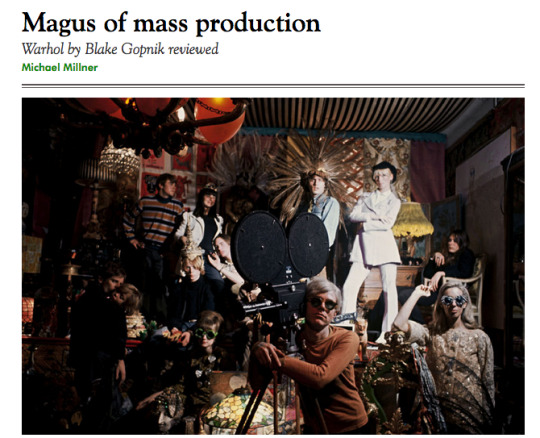
Lovely review of my Warhol bio by Michael Millner in the US edition of The Spectator:
“An extraordinary and revealing biography — surely the definitive life of a definitive artist….There is something interesting, revealing or humorous on just about every page. Gopnik deftly excavates his data mine. His prose is precise and pointed, and his year-by-year narrative clips along. He is also a master of pithy and informative character and historical sketches.”
Magus of mass production
Warhol by Blake Gopnik
Ecco, pp.976, $45.00
reviewed by Michael Millner
This article is in The Spectator’s April 9, 2020 US edition.
‘If you want to know all about Andy Warhol,’ the artist said in the East Village Other in 1966, ‘just look at the surface: of my paintings and films and me, and there I am. There’s nothing behind it.’
This quotation re-appeared in 2002 on the US Post Office’s commemorative Warhol stamp. It’s fabulously fitting for a stamp that reproduced a self-portrait, but when scholars recently compared the audiotapes of the interview with the printed version, the passage wasn’t on the tapes. Warhol sometimes invented interviews from whole cloth. He answered questions with a gnomic ‘yes’ or ‘no’ or, refusing to speak at all, allowed proxies like his ‘superstar’ Edie Sedgwick to answer for him. After all, he was just surface — leather jacket, shades, wig. The magus of mass production was there and everywhere forever, but nowhere in particular.
This negation of personality seems a publicity ploy, or the evasiveness of a shy man, or possibly the self-protection of a gay man in pre-Stonewall America. It was all of this, but also much more. The self-as-surface routine was perfect for a new kind of celebrity, one founded less on accomplishment and talent and more on presenting a surface for the projected desires of a mass audience. Authenticity and the sense of a deep self were obstacles to the creation of this new celebrity persona. Warhol made millions by autographing screen prints that were mass-produced by anonymous assistants.
Warhol somehow understood how this all worked. Born in 1928 in Pittsburgh to working-class Catholics from eastern Europe who barely spoke English, he realized the power and danger of being known to the world. The flipside of ‘15 minutes of fame’, Warhol suggests again and again, is death. The paintings of Marilyn Monroe memorialized her suicide; those of Jackie Kennedy, her suffering following her husband’s assassination. After Warhol survived his own assassination attempt in 1968, he allowed Richard Avedon to photograph the surgeon’s scars that crisscrossed the surface of his torso.
There is no narrative development or personal bildungsroman in Warhol’s art, and his affectless manner resists psychologizing, the biographer’s stock-in-trade. His images are impressions, flashes whose immediacy, flatness and repetition carry little sense of progression. The Brillo box contains no story, and the subject of a film like Empire, with its eight hours of static footage of the Empire State Building, remains inanimate.
Despite Warhol’s resistance, Blake Gopnik has written an extraordinary and revealing biography — surely the definitive life of a definitive artist. He accomplishes this through broad and deep, even obsessive, research into what he calls Warhol’s ‘social network’. Gopnik reports that he consulted 100,000 period documents and interviewed 260 of Warhol’s lovers, friends, colleagues and acquaintances. Warhol kept everything — he was a hoarder, collector and archivist all his life — and Gopnik has left no archival folder unopened or box unperused. Across 976 pages and more than 7,000 footnotes on a separate website, he recreates the swirl of ideas, culture and especially
people that orbited Warhol.
Warhol famously thought of his studio as a factory, producing work after work off an assembly line. The catalogue raisonné of his paintings, drawings, films, prints, published texts and conceptual works would, if it were ever completed, rival that of the other master of 20th-century self-replication, Picasso. Gopnik has surveyed it all.
There is something interesting, revealing or humorous on just about every page. Gopnik deftly excavates his data mine. His prose is precise and pointed, and his year-by-year narrative clips along. He is also a master of pithy and informative character and historical sketches:
‘Warhol’s Pop wasn’t about borrowing a detail or two from commercial work, as many of his closest colleagues [like Robert Rauschenberg] did; it was about pulling all its most dubious qualities into the realm of fine art and reveling in the confusion they caused there. ‘He wants to make something that we could take from the Guggenheim Museum and put it in the window of the A&P over here and have an advertisement instead of a painting,’ complained one early critic of Warhol’s, getting it right, but backward: Pop pictures started in the windows and then migrated to the museums.’
Warhol is about the Age of Warhol as much as Warhol himself. We learn about the new possibilities of gay life in 1950s New York, the city’s underground film scene, the history of silk-screening (so important to Warhol’s art), the fluctuations of the art market, the history of department-store window design. We learn about fascinating things we may not even want to learn about, such as the size and color of Warhol’s penis. (Large and gray, like the Empire State Building.)
Warhol arrived in New York City in 1949 and quickly made a name for himself as a commercial illustrator, especially of women’s shoes. He lived for two decades with his mother, Julia, one of his most influential muses, and sought out an emerging coterie of gay artists including Truman Capote, with whom he had a stalkerish infatuation. The great Pop paintings of the early 1960s transformed American art. No less important was Warhol’s mid-Sixties salon and studio, the Silver Factory (silver because wallpapered in aluminum foil). This perverse and fecund anti-commune of ‘superstars’ and hangers-on spawned Lou Reed and the Velvet Underground, as well as Warhol’s wannabe assassin, Valerie Solanas. On June 3, 1968, Solanas shot Warhol in the name of feminist revolution. His heart ceased beating on the emergency room table before a determined surgeon saved him. In the 1970s, he turned to what he called ‘business art’, mainly portraits of other famous people. He died in 1987, aged 58, after gallbladder surgery. Gopnik unpicks many of the conventions of Warhol’s non-biography. Warhol wasn’t an aesthetic rube when he arrived in New York. He had received an extraordinary avant- garde education from four years at the Carnegie Tech art school and at the Outlines gallery, which had brought Jackson Pollock, Alexander Calder, Joseph Cornell, Francis Bacon, Merce Cunningham and many other transformative artists to Pittsburgh in the 1940s. Warhol did not suddenly reinvent himself as a Pop artist in the early 1960s. As he built a successful career illustrating advertisements in the Fifties, he regularly tried to cross the line between commercial and fine art — a crossover he finally achieved in late 1961 with ‘Campbell’s Soup Cans’.
Warhol was baptized ‘Drella’ by acquaintances — part bloodsucking Dracula and part innocent yet social-climbing Cinderella. But Gopnik also argues that one of Andy’s greatest desires was for compassionate companionship. This was never achieved. The ‘routine’ gallbladder surgery which led to his death was anything but routine. He had been very ill for weeks but avoided treatment out of a lifelong fear of surgery and a misplaced faith in the healing powers of crystals.
Emphasizing Warhol’s radical ambiguity in art and life, Gopnik makes it impossible to say anything easy about him. His Warhol is a complex artist practicing what Gopnik, in a marvelous turn of phrase, calls ‘superficial superficiality’. The Warhol brand, the images of branded goods, famous faces and dollar bills, celebrates consumerism but also leaves us a little nauseated from our commodity fetishism. Warhol’s endless ‘boring’ films are hard to ignore because they give us so much space and time to think. They are studies in modern emptiness, and thus deep meditation. Warhol the critic of modern celebrity was also one of its greatest adulators.
This double image of Warhol seems just right. ‘His true art form,’ Gopnik writes, ‘first perfected in the first days of Pop, was the state of uncertainty he imposed on both his art and his life: you could never say what was true or false, serious or mocking, critique or celebration... Examining Warhol’s life leaves you in precisely the same state of indecision as his Campbell’s Soup paintings do.’
Gopnik’s analysis of Warhol’s ambivalence evokes another great observer of midcentury American culture. Lionel Trilling, the gray-suited lion of Columbia’s literary studies, would have hated Warhol, had he deemed the Silver Factory worthy of a visit. Still, Trilling’s America is Warhol’s:
‘A culture is not a flow, nor even a confluence; the form of its existence is struggle, or at least debate — it is nothing if not a dialectic. And in any culture there are likely to be
certain artists who contain a large part of the dialectic within themselves, their meaning and power lying in their contradictions.’
To Trilling, the great American authors contained ‘both the yes and the no of their culture, and by that token they were prophetic of the future’. Warhol absorbed and reflected the affirmations and negations of his America — but was he prophetic of ours?
Yes and no. For a long time now we have lived in the Age of Warhol. If he were alive today, he would film us staring blankly at the social networks on our smartphones, hour after hour, while nothing and everything go on and on. By retaining ambivalence, Warhol allowed us to recognize and experience the deepest ethical dilemmas of American life — and he paid a price for being our screen and mirror.
0 notes